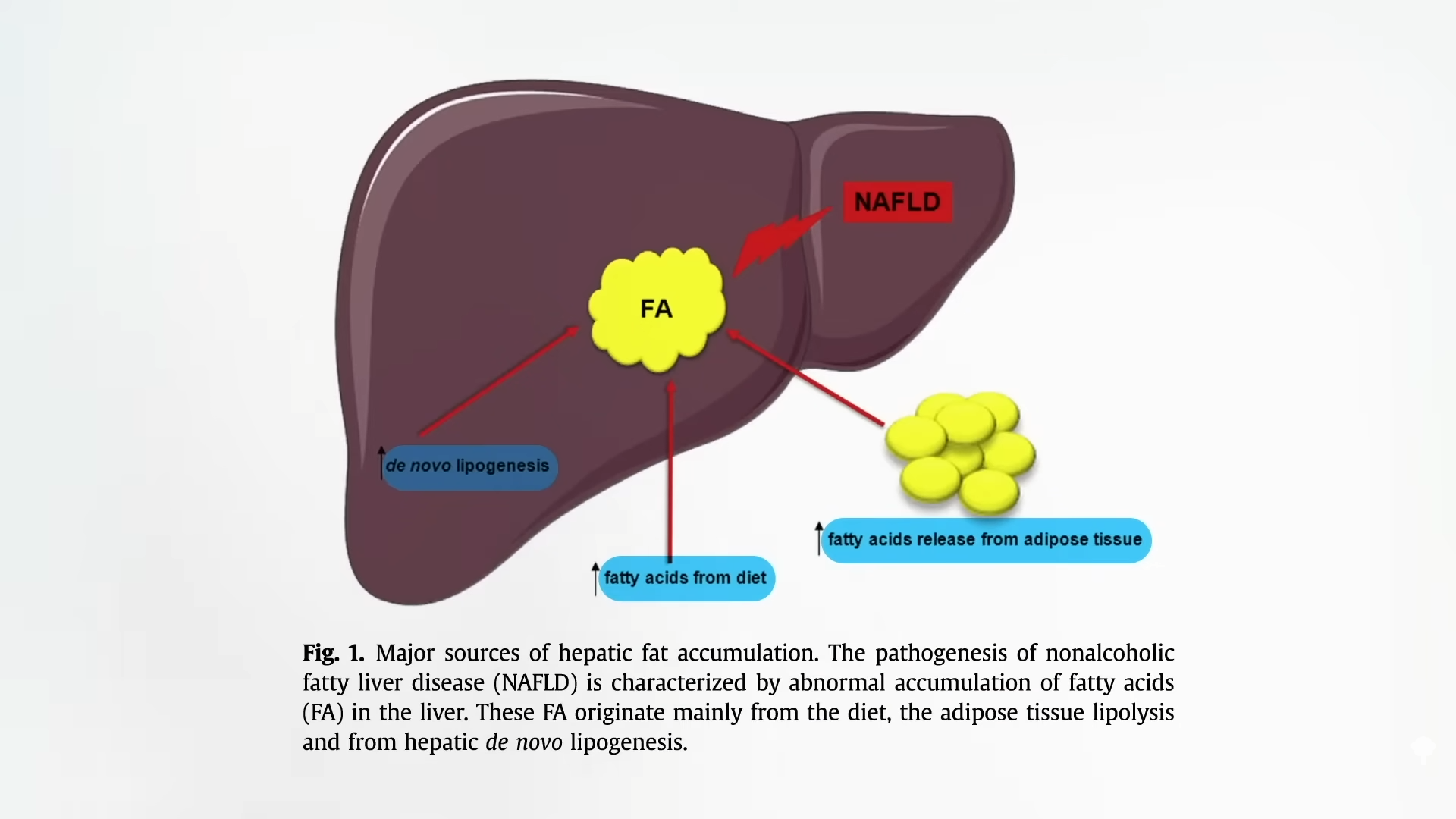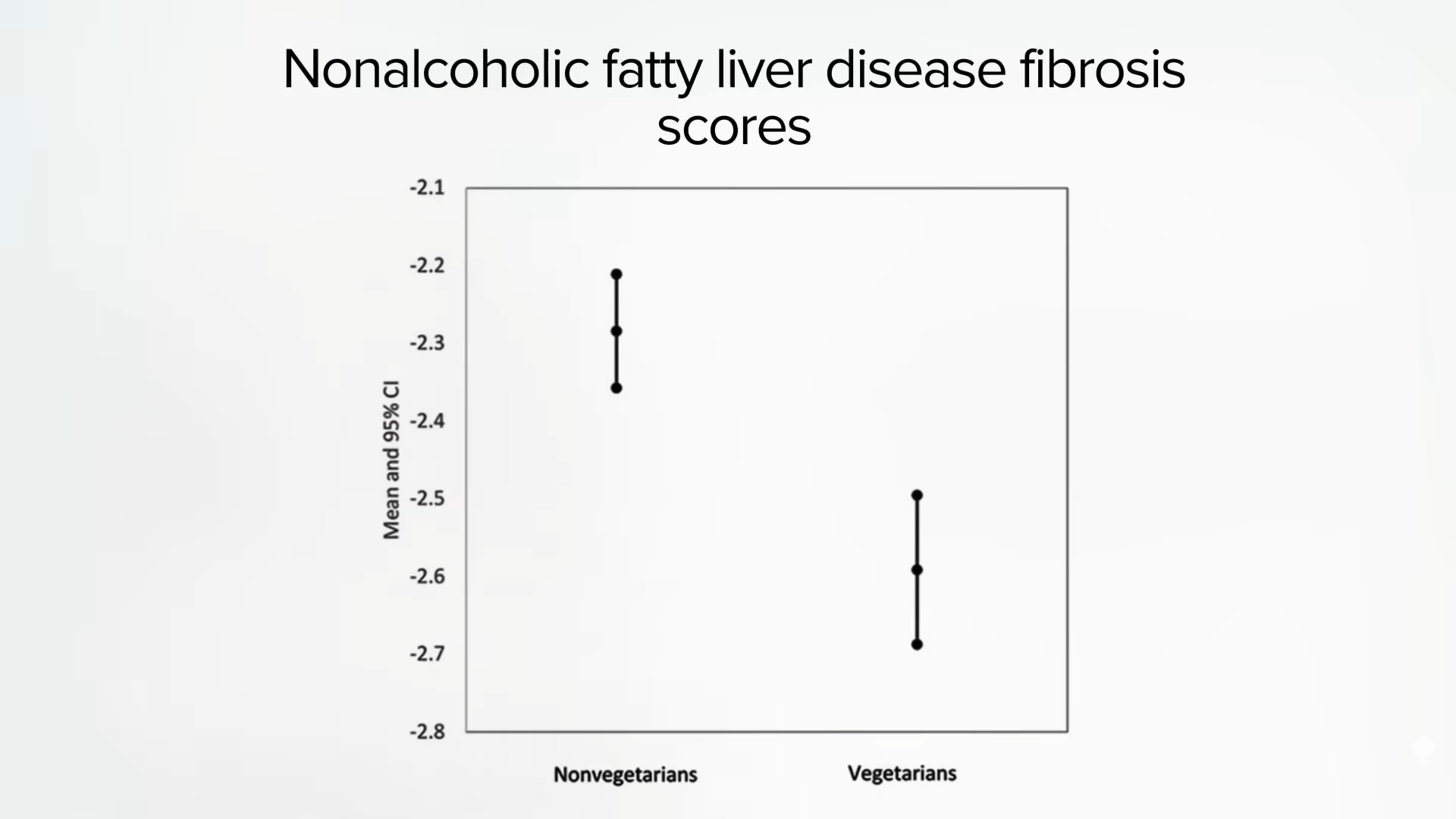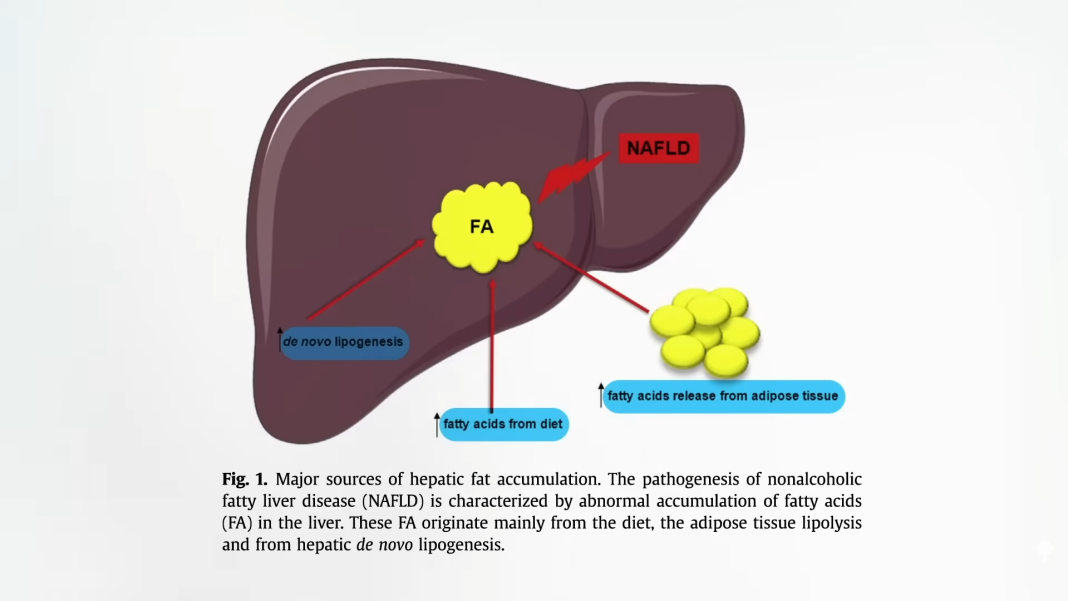What are the three sources of liver fats in fatty liver illness, and the way can we do away with it?
Nonalcoholic fatty liver illness (NAFLD) is now essentially the most frequent persistent liver illness, thanks partially to our epidemic of weight problems, and is even seen in kids. “[N]early 70–80% of overweight kids might have NAFLD.†Why will we care? As a result of a fatty liver can progress into fatty hepatitis, which may trigger scarring and liver cirrhosis, and cirrhosis is unhealthy sufficient, however it might additionally trigger the event of liver most cancers.
What’s the supply of the liver fats in fatty liver illness? There are three essential sources: the surplus sugar in our weight-reduction plan, the surplus fats in our weight-reduction plan, and the fats spilling over from our extra physique fats, as you may see at 0:51 in my video The Greatest Food regimen for Fatty Liver Illness Remedy.Â

How do we all know extra dietary sugar is unhealthy? As a result of it’s been put to the take a look at. When teenagers with fatty liver illness had been randomized to a weight-reduction plan low in free sugars (that means a weight-reduction plan low in added sugar and sugary drinks), they skilled a big enchancment inside eight weeks. Given these new knowledge, a liver journal editorial learn that “a robust argument may be made that we’re past any interval of uncertainty in regards to the dangerous results of extra sugar consumption and that we should now act on the big physique of accessible knowledge to tell the general public of the well being dangers of consuming an excessive amount of sugar.â€
And the way do we all know extra dietary fats is unhealthy? As a result of it’s additionally been put to the take a look at. When individuals had been randomized to a low-fat weight-reduction plan or a high-fat weight-reduction plan with the identical variety of energy, inside simply two weeks, the liver fats of these on the low-fat weight-reduction plan decreased by 20 p.c, whereas it elevated by 35 p.c within the individuals getting the identical variety of energy however on a high-fat weight-reduction plan.
On the low-fat weight-reduction plan, insulin ranges went down about 15 p.c, and on the high-fat weight-reduction plan, insulin ranges went up about 15 p.c. Low-carbohydrate and ketogenic weight-reduction plan advocates usually discuss how we have to eat extra fats and fewer carbs to maintain our insulin ranges down, however the precise reverse occurs when it’s really put to the take a look at. A single high-fat meal not solely will increase liver fats but in addition insulin resistance. Inside 4 hours, our whole-body insulin sensitivity can drop by 25 p.c, so our physique has to pump out that rather more insulin. Because the accompanying editorial put it: “A single fats bolus [dose] packs a punch.â€
So, to assist stop or deal with fatty liver illness, sufferers ought to restrict or keep away from consuming meals wealthy in fat. Whereas extra long-term medical trials are all the time wanted, “based mostly on present proof, we’d suggest a weight-reduction plan low in fats, notably in saturated fatty acids, and low in refined carbohydrates, notably by lowering mushy drinks consumption…as these dietary elements might play a pivotal position in NAFLD.†So which means a weight-reduction plan low in meat, dairy, junk, and reï¬ned carbs, particularly soda. Saturated fats is not solely “extra metabolically dangerous for the human liver than unsaturated fats,†however saturated fats is extra dangerous than straight sugar. What occurred when examine individuals had been overfed with 1,000 energy of saturated fats (like cheese and coconut oil), unsaturated fats (like nuts and olive oil), or sugar (like soda and sweet)? Overeating 1,000 energy a day of something isn’t good for us, however the saturated fats elevated liver fats by 55 p.c, considerably greater than the unsaturated fat, with the sweet coming in between the 2.
So, “though weight reduction is helpful in NAFLD, sure diets identified to induce weight reduction can really trigger or exacerbate this illness, and due to this fact induce insulin resistance, corresponding to very low carbohydrate, excessive fats diets.†In distinction, “wholesome plant-based diets are related with decrease NAFLD threat and extra favorable liver operate assessments profile.†The consumption of legumes (beans, break up peas, chickpeas, and lentils), for instance, is related with a decrease threat of fatty liver, as much as 65 p.c decrease odds from consuming extra beans.
Within the earlier examine, researchers weren’t trying at individuals consuming strictly plant-based diets, simply roughly so. It’s tougher to check these consuming fully meat-free diets since they at present characterize only a small phase of the U.S. inhabitants. However what about People of Indian descent? South Asians, people originating from the Indian subcontinent, are “one of many quickest rising ethnic teams in the US,†they usually seem to largely retain their diets, with about the identical proportion of vegetarians as in India—practically 40 p.c. We all know that in India, meat eaters are at considerably increased threat of fatty liver illness. It is the identical in Taiwan, with vegetarians at considerably decrease threat of fatty liver. And even the vegetarians who had been affected had considerably much less liver scarring, as you may see under and at 4:35 in my video. Their knowledge recommend that “changing a serving of soy with a serving of meat or fish was related to 12%-13 % elevated threatâ€â€”having a single serving of meat as a substitute of soy elevates the danger of fatty liver.Â

And in the US? Consuming a vegetarian weight-reduction plan was related with being slimmer and having higher blood sugars, higher ldl cholesterol, and fewer than half the chances of fatty liver illness. Is it trigger and impact? Now we have to place it to the take a look at. In an effort to reverse a fatty liver affected person’s inflammatory bowel illness with a plant-based weight-reduction plan, researchers discovered that their liver irritation was dramatically improved, however additionally they misplaced about 9 kilos within the first 11 days, due to consuming healthfully, so it’s arduous to tease out the precise results of the weight-reduction plan by itself. In reality, we have to watch out about speedy weight reduction, as a result of all that further fats being damaged down can flood into the bloodstream and typically make issues worse. So, for people with fatty liver illness, dropping about three kilos per week may be safer.
Regardless that a plant-based weight-reduction plan has but to be correctly put to the take a look at in a randomized medical trial for fatty liver illness, I’d submit that it’s nonetheless one of the best weight-reduction plan for this illness, and that isn’t based mostly on a single case report, however on the truth that heart problems, not liver failure, is the commonest reason for dying amongst sufferers with fatty liver illness. And we do have randomized managed trials proving {that a} wholesome plant-based weight-reduction plan and way of life applications can reverse coronary heart illness and open up arteries with out medication, surgical procedure, or stents. Sure, sufferers with fatty liver illness and fatty hepatitis “might ultimately develop cirrhosis [of the liver], however provided that they don’t die of cardiovascular illnesses first.â€
Physician’s Notice:
There are some particular meals which will additionally assist. See my movies within the associated posts under.
If extra sugar is so unhealthy, what about fruit? Take a look at If Fructose Is Unhealthy, What About Fruit? and How A lot Fruit Is Too A lot?.Â

